Your Crypto News on Steemit December 7, 2017
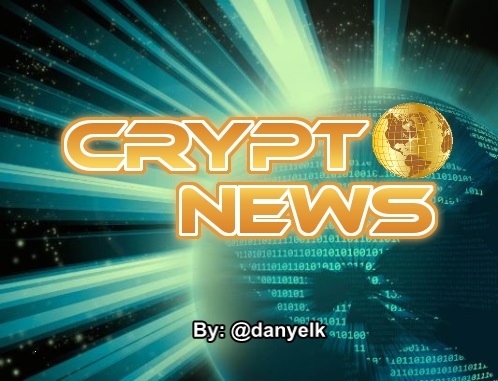
- The 10 Biggest Myths about Cryptocurrencies - Part 10
- Nokia creates Blockchain Solution in the Health Sector
- R3: Corda Platform now on Amazon
- Blockstack: Decentralized Internet gets $ 53 Million via ICO
- Moscow: Blockchain Civic Involvement
- IOTA jumps to the Top thanks to Microsoft Cooperation
- Fines4U: Pay your Traffic Ticket with Bitcoin
- Project Coral Reef: Buy Music Albums with Monero
- Bitcoin Course Challenge Week 9
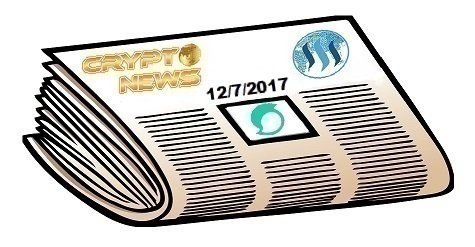


In the series "The 10 Biggest Myths About Cryptocurrencies", I take a closer look at the top 10 claims about cryptocurrencies and their opportunities and risks. In doing so, I will daily explore a new myth and check it for accuracy.
Myth 10: Cryptocurrencies like Bitcoin are similar to pyramid schemes
In the final part of my series, I once again dare to tackle one of the big investment themes involved in trading Bitcoin and Co.: Are cryptocurrencies at their core designed to lure and connect investors with false promises? And can structures of multi-level marketing, snowballs or a pyramid be recognized in the inner state of the crypto currencies?
First of all, it should be noted that cryptocurrencies are not equal to cryptocurrencies. In addition to the important distinction between the coin, which fulfills the classical functions of a currency, and the token, which can also be used more purpose-bound versatile, the latter can be further differentiated, such as utility tokens and equity tokens. The utility token fulfills a function firmly attributed to it as a means of payment or fuel within a blockchain network, while the equity token represents shares in a company or a valuable item.
Also to be considered separately is the field of ICOs, ie newly issued coins and tokens. The ICO tool is also considered by connoisseurs to be the current "killer app" in the area of finance and currently offers perhaps the most promising way to raise funds for a project through a crowd-selling token sale - be it one the blockchain-based platform whose use depends on the use of a utility token, or simply a company that wants to finance its own expansion by issuing an equity token.
Of course, such an easy way to generate financial resources runs the risk that more passengers jump on the train than the whole trip is good. In other words, not every token offered - whether inside or outside of one's own ecosystem - really serves a purpose, and not every token has a serious business model behind it. The key issue here is that there are currently no significant hurdles to completing an ICO and, therefore, a token sale is not subject to centralized quality control. Because of this, there are few to no opportunities to prematurely withdraw potentially malicious ICOs. Occasionally it comes to crypto scam systems, because due to the greed of the investors pretty easy pyramid schemes can be put on.
To counter this problem, radical measures have already been taken, such as the absolute ICO bans in China and South Korea. Also in this country there were reactions from state side, even if these in the form of official warnings against possible fraud with ICOs turned out comparatively moderately. However, it would be the wrong way to set ICOs and resulting cryptocurrencies under lumpshot just because there are black sheep among them. Rather, the individual investor is required to thoroughly look at the project in which he would like to invest in advance and form his own opinion about the safety of the system.
This brings me to the end of my little series "The 10 Biggest Myths About Cryptocurrencies". I hope that it has helped to create understanding, reduce prejudice against cryptocurrencies, and create interest in further exploring the subject.
Part 1: Cryptocurrencies are mainly used for criminal business such as money laundering.
Part 2: States can not regulate cryptocurrencies and will sooner or later ban them.
Part 3: Cryptocurrencies price rises are a pure bubble formation.
Part 4: The storage of cryptocurrencies is cumbersome and risky.
Part 5: The tax situation for cryptocurrencies is unclear.
Part 6: Cryptocurrencies are not attractive to institutional investors.
Part 7: A regulated trade in cryptocurrencies is not possible.
Part 8: Cryptocurrencies have no intrinsic value.
Part 9: The volatility of cryptocurrencies makes investments unattractive.


Also, the Finnish telecommunications company Nokia now jumps on the blockchain train. Currently they are looking for solutions to store data from the healthcare sector. In cooperation with the OP Financial Group, the Finns have started a pilot project to store mobility and health profiles safely, anonymously and decentrally.
Health data is a sensitive topic. While the patient-related information circulates between doctors and health insurances, they are constantly exposed to a certain publicity. At the same time, however, they also include personal information about the disease's history and history. This (meta) data also includes data that can be collected via mobile devices. Fitness apps capture how much we go, sweat and sleep. This creates personality profiles that are very useful when evaluated. On the other hand, they are personal and worthy of protection.
To explore this gap between publicity and privacy as efficiently as possible, Nokia is now developing a blockchain solution. According to a public statement, they started their project together with OP Financial Group. Currently, 100 participants are testing ways to best store and share health information while providing the best possible protection for your privacy.
The technology allows the company, which is mainly known for its mobile phones, to keep track of collected data. At the same time, the blockchain allows only verified parties to access the data.
In their statement they state:
In order to create confidence, blockchain technology offers itself above all in terms of data. First and foremost, with its decentralization, it initially offers protection against administration and possible misuse by corporations. The use of smart contracts can also help protect the data. In effect, each user may have more control over their data than is the case in a centralized institutional approach.
Nokia wants to create confidence with the blockchain
To do this, all data that users submit to the technology is encrypted. In the end, access has only one verified authority, in this case the OP Financial Group. Nokia then provides additional verification of the data. What they ultimately evaluate is only the relevant (meta) data, without direct reference to the person.
Kristian Luoma, head of OP, is pleased about this cooperation:
In the test program, they use, among other things, wearable devices to record the daily pace and sleep rate. This data is then stored on the blockchain. The results therefore compare the developers with the fitness goals of the users. The users, who approach their goal and use the program, finally get digital loyalty points.
According to the company, Nokia wants to use the pilot project to find insights and solutions for global health issues. An approximation between blockchain and the health service already exists in the USA. There, however, the focus is more on the handling of patient records. Especially in the field of data protection, the advantages of the technology have been recognized there.


The Corda platform, developed by R3, is now also available to users of Amazon Web Services (AWS). This makes Corda one of the first Distributed Ledger Technology (DLT) applications on the AWS network.
The blockchain start-up R3 continues to consolidate its technology and commercial ties. The newest partner is the US online sales company Amazon, as R3 announced in a press release. Accordingly, R3 integrates its platform Corda with the Amazon Web services network of the Internet giant. For example, Corda will enable AWS users to develop CorDapps or use it directly from R3 through the AWS Marketplace.
R3-CEO David Rutter said:
Amazon is far from being the first major international corporation to partner with R3 to take advantage of the benefits of the Corda platform. Last month, the software company Microsoft announced that it would work more closely with R3 in the future. At the same time, Corda should be easier to adapt to all Microsoft Azure users, giving governments and businesses access to Distributed Ledger Technology. The European SIA Group is also working closely with R3 to promote the integration of Corda with its own SIAchain network.
In total, the R3 consortium comprises more than 160 banks, financial services companies, technology companies, central banks, regulators and trade associations working together to develop DLT solutions for the financial industry and commerce. At the end of October, the international network presented for the first time a system for cross-border payments, which is based on the Corda platform.


The Blockchain Startup Blockstack, which wants to build a kind of parallel Internet with full data control, has collected nearly $ 53 million via ICO.
Blockstack: Blockchain-based, decentralized parallel internet planned
A decentralized Blockchain-based Internet that wants to give users full control over their data - nothing less hovers the developers behind the Startup Blockstack. Access is available to users through a specially developed browser. The data is not stored centrally in the data centers of large IT groups, but in the blockchain.
The browser add-on of Blockstack provides access to the future decentralized Internet. (Image: Blockstack)
In May, Blockstack introduced a browser add-on of the same name (macOS, Windows, Linux) to help developers program applications for the distributed network. Blockstack has now raised $ 52.8 million in an ICO, according to Venturebeat.
A total of 440 million tokens were sold to more than 800 people and companies during the Initial Coin Offering (ICO), which was launched back in November - and they had to invest at least $ 3,000. The largest single sum amounted to six million dollars, the unnamed investor had to commit himself to sell the tokens for at least four years.
Investors include industry leaders including Union Square Ventures, Foundation Capital, Lux Capital, Winklevoss Twins Winklevoss Capital, Blockchain Capital, Digital Currency Group, Y-Combinator partner Qasar Younis, Techcrunch founder Michael Arrington and Digg Founder Kevin Rose, Coindesk reports. The Blockstack team emphasizes that investors are partners for the future who would be committed to the long term.
Blockstack: Millions are paid after goals are achieved
In order to not only implement short-term goals, Blockstack has imposed restrictions on access to the funds received. For example, initially only ten million dollars are paid out. Another $ 20 million will be given when the next version of the product is ready. The last $ 20 million will not follow until Blockstack reaches the target of one million registered users. Currently, the Blockstack founded in 2013 claims to have around 76,000 registered domains and the support of 13,500 developers.
In the coming years, there is still a lot of work ahead of them, write the Blockstack makers in a corresponding blog article. These included building a developer platform and app ecosystem, and launching the blockstack token. The tokens are expected to go live in August 2018 at the earliest. A similar approach as Blockstack is pursued by the Namecoin project. Unlike Namecoin, Blockstack relies on the Bitcoin blockchain, where it has been active since September 2015.
Meanwhile, there are some completed apps in the network, such as a to-do list or a forum. Other applications, such as a podcast or survey app, are currently under development. The special feature of Blockstack: The users host their data, so to speak, central servers are not needed. The Blockstack developers rely on the [protocol Virtualchains](https://blockstack.org/blog/virtualchain-research-paper-published-at-dccl169, thanks to the services permanently on block chains can be set up.
However, the chain uses Dropbox, Amazon S3 and Google Drive, where the data is stored encrypted, as the Linux magazine described in May. It is also questionable whether the developers manage to develop services that can compete with the popular applications of the IT giants Facebook, Amazon or Google and attract accordingly users.
The software underlying the Blockstack project can be viewed on Github. Visit the project 8website](https://blockstack.org/) for more information and developer tutorials.

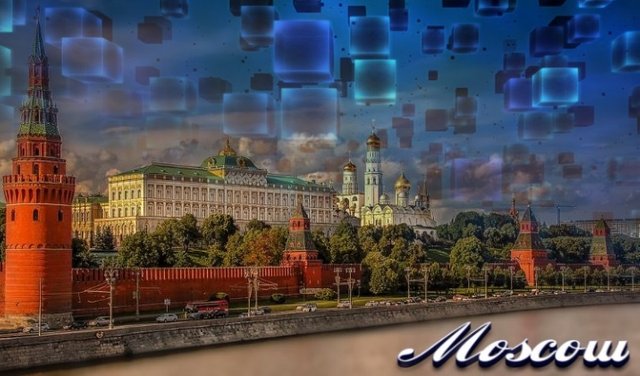
The authorities of the Russian capital Moscow use blockchain technology as part of their initiative to promote citizen participation in public decision-making. The aim is to improve citizens' digital access to voting procedures and, at the same time, their transparency. This week the city presented on the official website of the mayor Sergei Sobyanin. It also states that they want to use the technology in the course of the announced in October real estate registry.
As announced in August, this week confirms the technological leap of the city administration: In their e-government pilot project "Active Citizen" [literally from Russian: Активный гражданин], the local authorities are now increasingly relying on Blockchain software.
As part of the initiative, the Muscovites should be able to actively participate digitally, for example in public projects. For example, in the past, citizens have had the option of coordinating public recreational activities or the planting of new green spaces by setting up wireless networks in local transport.
The blockchain technology should now help to make these voting procedures more reliable and the overall initiative more open. Accordingly, the city cites particular transparency reasons in its statement of the step:
In order to participate in the voting process, residents must download the appropriate software and register. GitHub also gives you the option to view the source code of the software.
Blockchain on the rise
Aside from the Citizen Participation Initiative, the Moscow authorities mention other potential applications of blockchain technology on their website. For example, the software could be used in private and public sectors, finance and accounting in the future. In addition, the blockchain technology will help in the course of a pilot project to register Moscow real estate.
The Russian capital is thus following a trend that has been looming across the country since this year. For example, the Russian Ministry of Economic Affairs announced in October a corresponding blockchain-based cadastre project for 2018, for which Moscow is now the godfather. Similarly, digitally registered land register entries already use Sweden, Georgia or India.
In addition, the Kremlin is targeting further uses of blockchain technology. For example, a tender issued by the State Duma, the lower house of the Russian parliament, in November is currently underway to investigate the potential uses of blockchain in public space.
At the same time, however, the country is one of the largest skeptics of cryptocurrencies, arguably the most prominent blockchain application. At the same time, the above call for tenders aims to disclose government regulatory options.
Such regulation was demanded by Russian Finance Minister Anton Siluanov in September until the end of 2017. In addition, the country under the special patronage of President Putin is currently countering. In October, he announced the release of the state-controlled crypto-ruble to curb the influence of bitcoin on domestic markets.


In a brilliant rally, the IOTA share price of IOTA rose by 250% and is now in fourth place in terms of market capital of the crypto currencies.
Although Bitcoin continues to storm unabated to new heights, today was marked by another well-known cryptocurrency. IOTA, certainly no stranger, but a candidate who has been in the Top 20 cryptocurrencies for a while, shows an incredible rally.
For three days, IOTA has risen from $ 1.38 to $ 4.48, up 270%. This increase in value not only allowed IOTA to claim its place in the top ten cryptocurrencies, but also made it to fourth place. With that Ripple came off the throne.
Data marketplace, media presence, cooperation with Microsoft - the reasons for growth
What is the reason for the growth of IOTA? On the one hand, the cryptocurrency, which is still decentralized without a blockchain, has enjoyed popularity in the crypto community for quite some time. Tangle, the data structure underlying IOTA, promises energy- and resource-efficient scalability, fast transactions without high fees, and the foundation for an Internet-of-things-capable ledger.
In addition, there has recently been a variety of issues that put the cryptocurrency in the public eye. In addition to founding a foundation and a marketplace for data, Dominik Schiener, one of the leaders behind IOTA, will be speaking to Johann Jungwirth, the CDO of Volkswagen, in the ZDF morning magazine. Finally, it has recently become known to the wider public that Microsoft will cooperate with IOTA. Together with companies such as Accenture, Fujitsu or Bosch, Microsoft was able to win as part of the Data Marketplace as a cooperation partner.
At least one representative from Microsoft is very excited about the partnership in the context of the Data Marketplace:
It can not be said otherwise: we live in exciting times. Not simply because a large company has made a letter of intent to cooperate, but because the Data Marketplace is developing an actual solution relevant to Industry 4.0 and the Internet of Things. In that respect, it is no wonder that a price explosion occurred.
Whether this is sustainable? Certainly, it should be emphasized that currently the difference in market capital between ripple and IOTA is very small, so it may be that the cryptocurrency based on the Tangle soon has to give up its recently conquered place. Nevertheless, it can be assumed that IOTA will continue to talk about itself.


Fines4U, a company from South Africa, now allows its traffic tickets to be paid in Bitcoin. The company's decision to act as a mediator between users and companies was fueled above all by the growing adoption of the cryptocurrency.
The company Fines4U does not necessarily adapt Bitcoin in the traditional sense. There are no direct payments via QR code, but the company tries to tap Bitcoin without direct investment.
Accordingly, Fines4U operates as a kind of electronic middleman who squeezes between jurisdiction and the individual and makes it possible to pay penalties via Bitcoin. They accept the fines and send them to the government. The company claims that it manages fines for nearly 500 companies and 8,000 individuals.
Fines4U and Bitcoin as an investment
So the company does not generate any new Bitcoin. Customers use existing Bitcoin for payments, the company keeps them and pays the fines in Fiat. The cryptocurrency becomes more and more an investment.
Fines4U accepts Bitcoin, but keeps it as an investment and pays the respective penalties in the local currency.
After Van Niekerk had published her business plan, she probably got many requests. Less, however, because many wanted to pay in Bitcoin. On the contrary: many simply wanted to inform themselves about the cryptocurrency.
Even though more and more people are dealing with the cryptocurrency, this is increasingly regarded as an investment. Contrary to the original idea of a freely accessible, decentrally organized alternative currency, intermediaries increasingly switch between the user and the application. Werner van Rooyan from the South African Stock Exchange Luno explains:
That being said, it's the relatively high transaction costs and duration that most people are likely to spend on Bitcoin rather than using it. Nonetheless, Bitcoin continues to push itself into the consciousness of the people, a rethinking always takes place.


In the future, albums of various artists, such as those of Mariah Carey or Marilyn Manson, can be bought with the cryptocurrency Monero.
More than 40 musicians - including Slayer, Weezer, G-Eazy, Sia and Fallout Boy - are involved in the project "Coral Reef". The idea comes from the entrepreneurs Naveen Jain and Riccardo "Fluffypony" Spagni. Fans of the musicians can not only buy albums but also other articles with the crypto currency. There is also a 15% discount on the fan merchandise of Mariah Carey, Alice Cooper and Mötorhead.
The project is supported by the companies Manhead Merchandise and Global Merchandise Services. Payment service provider GloBee, which is managed by Spagni, is also involved in the project.
Rapper G-Eazy explains in a statement:
Monero is finding more and more supporters and in 2016 was one of the most powerful cryptocurrencies. Although the privacy features of the cryptocurrency are a thorn in the side of some authorities, it is precisely for this reason that their users value it.
Project Coral Reef is a joint initiative of Naveen Jain and Riccardo "fluffypony" Spagni. The founders of the project hope that the cryptocurrency privacy features will attract new customers as well. "Cryptocurrencies are fast becoming popular for purchases, but not all currencies are the same and not all are as safe and secure as people think. Project Coral Reef is an important step in the direction of Moneros adoption by the masses, "said Spagni about the project.

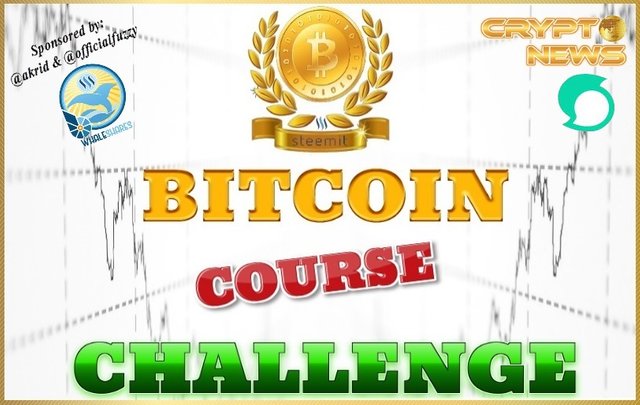
Don't miss your CHANCE to Win 💰 20 Whaleshares + 40 Hairshares💰 in the 🏆BITCOIN COURSE CHALLENGE Week 8🏆
How and where to participate? Just click HERE!


I wish you all a lovely Thursday!!!
ⓁⓄⓥⒺ & ⓁⒾⒼⒽⓉ
Best regards
@danyelk
.gif)
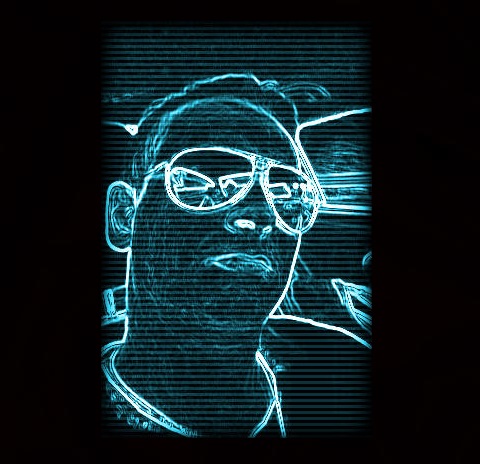
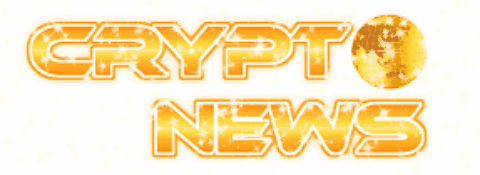
Crazy stuff happening on the market! Thank you for clearing it up a little bit!
Your welcome glad to clear thinks a bit up. It is so true we are in an exciting time for the moment. I can't wait to see what the future brings :)
Have a nice day and thanks for your upvote.
I'm really impressed by IOTA and Tangle. They have been working under the radar, got these huge companies (not only Microsoft!) on their team. The internet of things marketplace is something many have been waiting for. So I think this is only the beginning of something quite revolutionary. Whether the market cap is #3, #4 or #5 isn't as interesting as the gamechanging potential of the technology. Very good news summary @danyelk!
Yes your right the technology behind is very impressive can't wait to see where it goes and what more is to come. Thanks for your nice comment and have a nice day :)
Blockchain technology is the future!
I appreciate your frequent posts, just found your steemit and I followed!
Yes it is now and it is the future!
Thanks for follow and the comment have a nice day and steem on :)
Am I too late for the contest - I say 18 K yesterday lolz >:P
Bitcoin is the most craziest thing i ever witness in my life.This is a real madness or so-called madness of the tulip, that's what history tells us.
Yes BTC is for sure some crazy phenomenon :)
You can never solve a problem on the level on which it was created.
- Albert Einstein
@danyelk payed 2.716 SBD to @minnowbooster to buy a stealth upvote.

transaction-id d85e5c25c3ffa2854d031395b8a328a4670a0849
@stealthgoat
Nice......follow me.... vote and commet back......
Congratulations @danyelk! You have completed some achievement on Steemit and have been rewarded with new badge(s) :
Click on any badge to view your own Board of Honor on SteemitBoard.
For more information about SteemitBoard, click here
If you no longer want to receive notifications, reply to this comment with the word
STOP